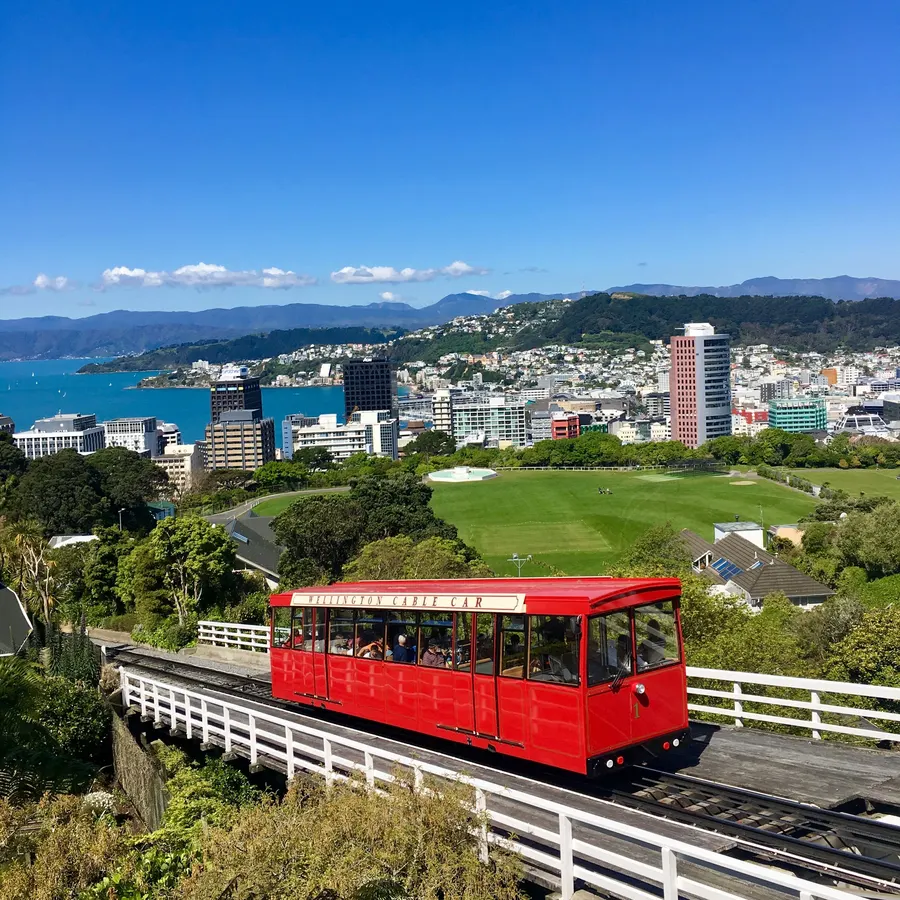Windy in Wellington! You’ve heard that on the forecast before, but why? The capital city of New Zealand, is famously known as the “Windy City” due to its consistent and often vigorous wind patterns. This phenomenon can be attributed to several geographical and meteorological factors.
Geographical Setting and the Funnel Effect
Wellington’s geographical positioning is a primary factor contributing to its windy reputation. Located near the Cook Strait, the city is subjected to a natural funnel effect. The Cook Strait is a relatively narrow channel of water that lies between the North and South Islands of New Zealand. As air masses move between these islands, they are squeezed through this narrow passage. According to fluid dynamics, when a fluid (or in this case, air) passes through a constricted space, its velocity increases. This is analogous to putting your thumb over a garden hose; the water sprays out faster and with more force. In Wellington’s case, this means that normal wind patterns are intensified as they pass through the Cook Strait.
Additionally, the local terrain amplifies this effect. The surrounding hills and valleys create further constrictions in airflow, leading to localized acceleration of wind. This can result in sudden gusts and varying wind speeds within different parts of the city, a phenomenon often observed by Wellington’s residents.
The Roaring Forties
The “Roaring Forties” are a band of powerful westerly winds found between the latitudes of 40 and 50 degrees in the Southern Hemisphere. These winds are particularly strong and consistent due to the lack of significant landmass at these latitudes to disrupt their flow. Wellington’s latitude places it directly in the path of these winds. The science behind the Roaring Forties involves the Earth’s rotation and the way it affects atmospheric circulation. The Coriolis effect, a result of the Earth’s rotation, causes moving air to be deflected to the right in the Southern Hemisphere, creating these prevailing westerly winds.
These winds are also influenced by the high-pressure systems over the Australian continent and the low-pressure systems in the Southern Ocean. The difference in pressure causes the air to move from high to low-pressure areas, resulting in strong, consistent winds that are channeled towards and through Wellington, contributing significantly to its windy climate.
Local Topography
Wellington’s topography, characterized by its hills and coastal location, plays a crucial role in shaping its wind patterns. Hills and valleys have a significant impact on the flow of wind. When air flows over a hill, it speeds up as it moves over the top. This is partly due to the Bernoulli Principle, which states that as the velocity of a fluid increases, its pressure decreases. Therefore, wind speeds are generally higher over hills and lower in valleys.
Moreover, Wellington’s coastal location means it is exposed to sea breezes. During the day, land heats up faster than the sea, causing air over the land to rise and cooler air from over the sea to rush in to replace it, creating a sea breeze. This effect is reversed at night but is less pronounced. These sea breezes, combined with the city’s hilly terrain, lead to complex and often unpredictable wind patterns, contributing to Wellington’s windy nature.
Impact of Climate Change
The potential impact of climate change on Wellington’s wind patterns is an area of ongoing research. Climate change is expected to alter global wind patterns, but the exact effects are complex and vary by region. For Wellington, changes in sea surface temperature and atmospheric circulation patterns could modify the intensity and frequency of its winds. Global warming could potentially alter the strength of the Roaring Forties, although predicting these changes requires sophisticated climate models and a comprehensive understanding of atmospheric physics.
Furthermore, as the polar ice caps melt and the distribution of cold and warm air masses changes, we may see alterations in high and low-pressure systems. These changes could either amplify or mitigate the wind conditions in Wellington, depending on how the global wind patterns adjust to a warming climate.
Windy in Wellington – Benefits and Challenges
While Wellington’s wind is a defining feature of the city, it brings both advantages and challenges. The winds contribute significantly to the city’s air quality by dispersing pollutants, making Wellington one of the least polluted capitals in the world. Additionally, the consistent winds are ideal for wind power, providing a sustainable and renewable energy source.
However, the strong winds can also be a nuisance and pose various challenges. They can disrupt transportation, especially air travel and ferries crossing the Cook Strait. The winds also impose architectural constraints, as buildings must be designed to withstand the frequent strong gusts. Outdoor activities can be affected too, with sports and recreational events often needing to account for the windy conditions.
In conclusion, Wellington’s windy conditions are the result of a complex interplay of geographical, meteorological, and potentially climatic factors. Understanding these elements provides insight into why Wellington is rightfully dubbed the “Windy City” and helps us appreciate both the benefits and challenges brought about by its unique climatic character.

0 Comments